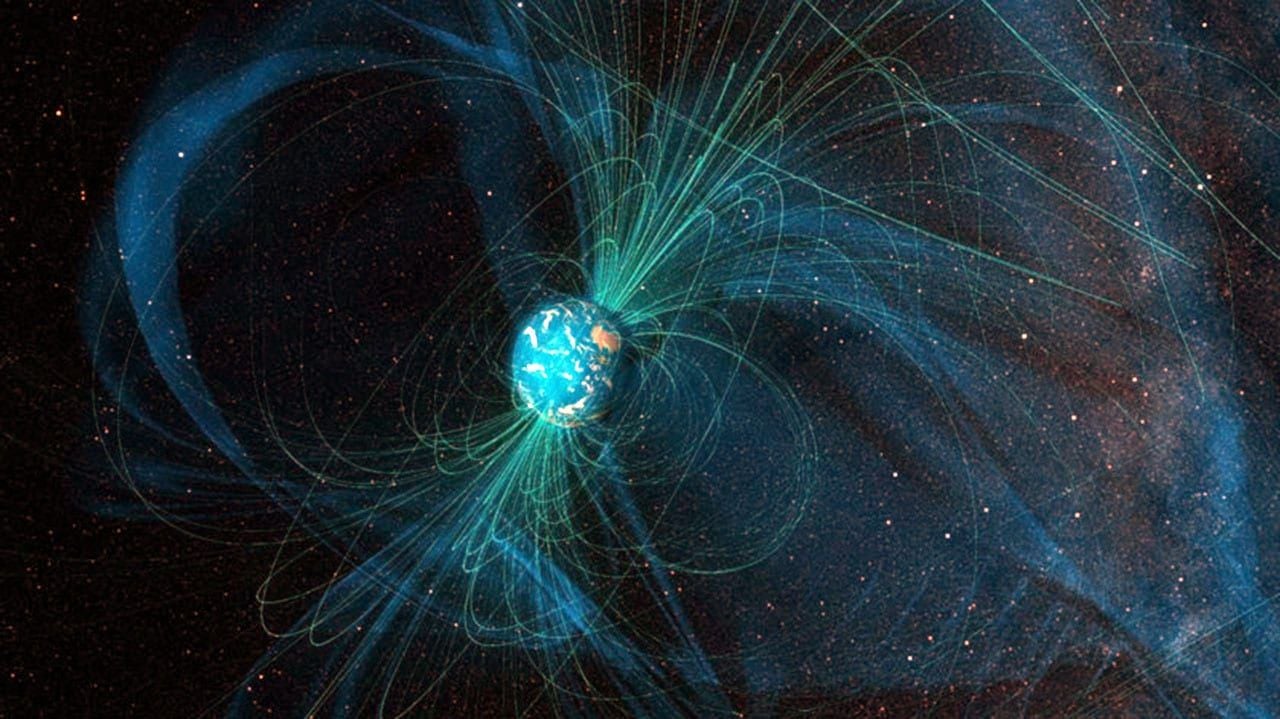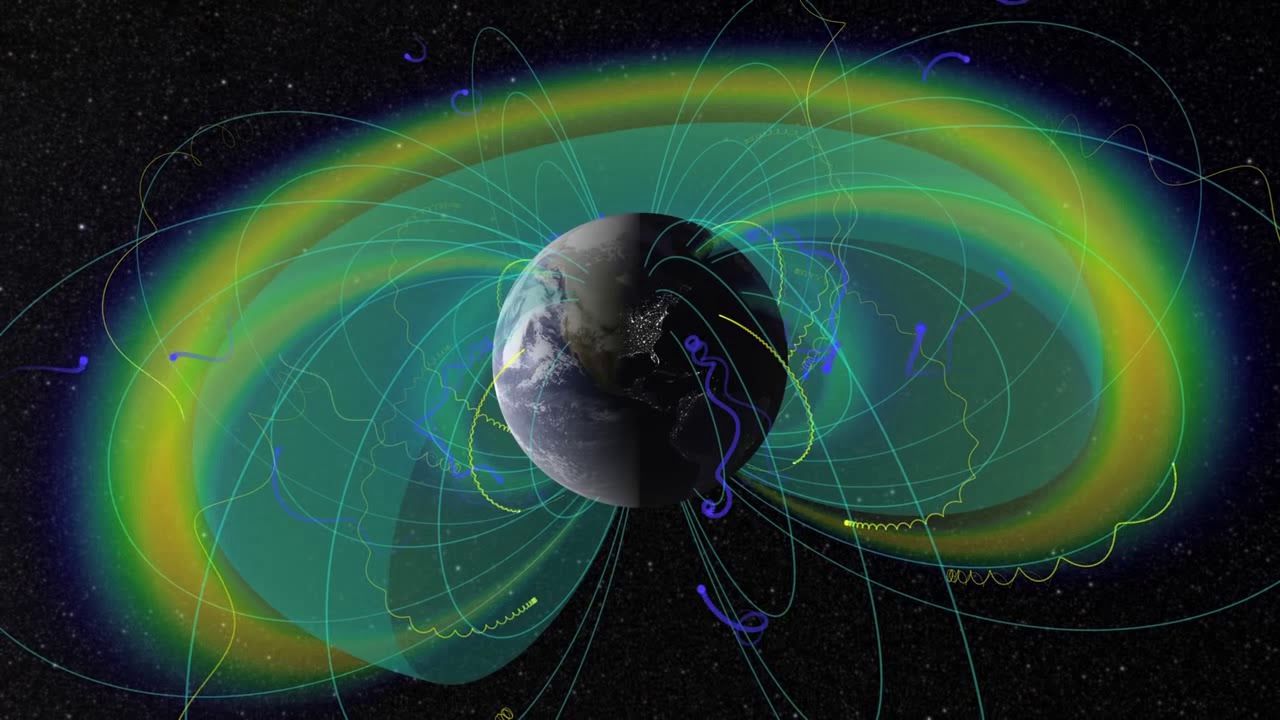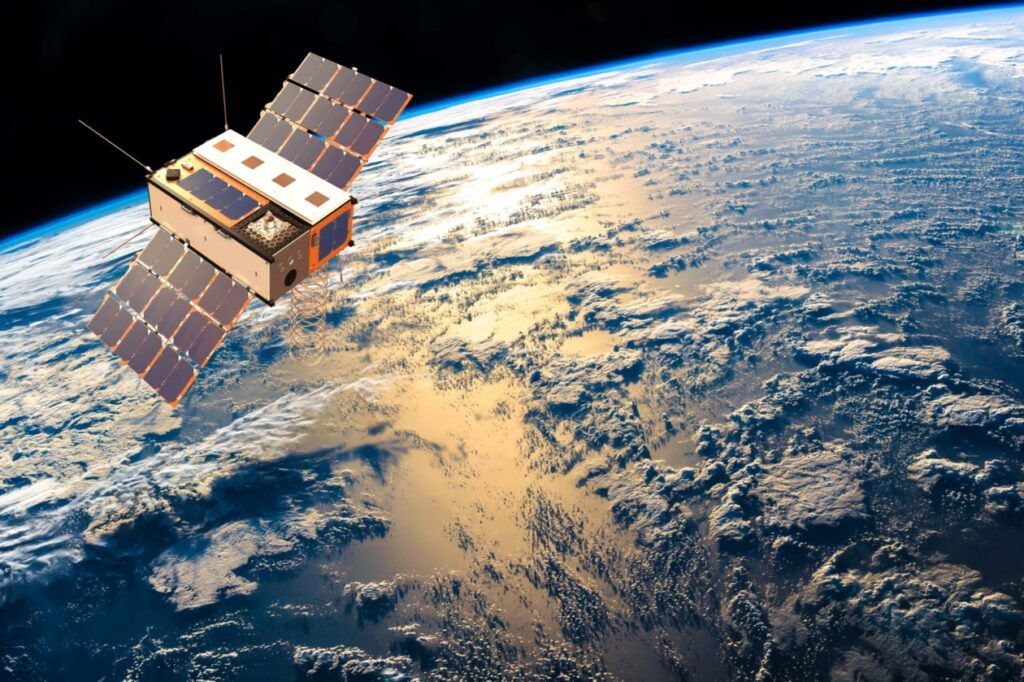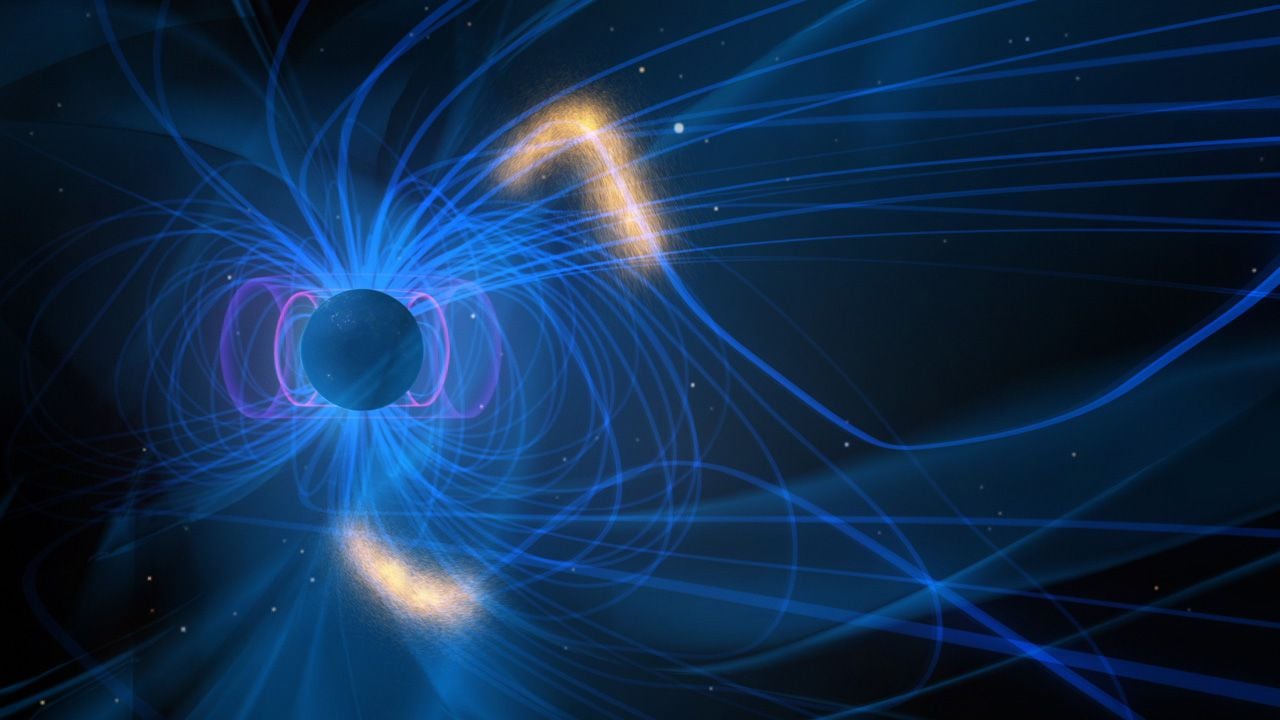Scientists’ Concerns Grow About Giant “Pothole” in the Earth’s Magnetic Field
Scientists have become increasingly concerned about a potential “pothole” in outer space.
The Earth’s magnetic field has many jobs, but possibly its most important function is to protect us and our “orbiting tech” from the damage of energetic rays that radiate from the sun. While the magnetic field has been around for longer than we can even fathom, scientists are worried that a certain part of it has endured significant damage.
What Does the Magnetic Field Do?
The Earth’s magnetic field helps scientists use compass navigation to study the stars, and it’s even responsible for displaying the Aurora Borealis.

Source: Tech Explorist
But most importantly, the magnetic field shields Earth and all of its inhabitants from the Sun’s harmful rays. Of course, our planet greatly benefits from the sun shining down during the day, but too much sun would be disastrous. Without the magnetic field, Earth’s environment wouldn’t be quite like it is now.
The Magnetic Field Has Caught the Attention of NASA
Researchers have noticed that the Earth’s magnetic field is much weaker in the South Atlantic Anomaly region, even likening the impaired area to a pothole.

Source: NASAgovvideo/YouTube
NASA is keeping close watch over the region, and researchers think the pothole-like damage has appeared in the sky on previous occasions. The magnetic field of our planet is an essential element of our existence, keeping us safe from sun overexposure.
The Phenomenon is Called the “South Atlantic Anomaly”
Our magnetic field is here to serve its purpose, but one segment of it has a notable dent.

Source: ScopeBlog
While the dent’s official name is actually the “South Atlantic Anomaly,” others have simply referred to it as a pesky pothole. The weakened area is not something that would wipe out civilization, but it’s something that has continuously stumped scientists for years.
A Damaged Magnetic Field Would Affect What We Launch Into Orbit
The main cause for concern is that we need the magnetic field for NASA-approved objects to properly orbit the Earth.

Source: Jerusalem Post
Things like satellites would face technical malfunctions such as data loss and unrecoverable damage of important information. This would be brought on by too much exposure to the sun if the Earth’s magnetic field was fractured. If that happens, devices launched from the International Space Station would be in seriously rough shape.
What Caused the Pothole in Space?
NASA has already been studying the intergalactic pothole for several years as they try to decipher what caused it and if it has potential to get worse.

Source: Bright Ascension
According to research, the pothole appears to be caused by “a huge reservoir of very dense rock deep underground known as the African Large Low Shear Velocity Province.” While the term may be new to us, the African Large Low Shear Velocity Province has long been recognized by scientists.
How Does the African Large Low Shear Velocity Province Work?
The main issue with the African Large Low Shear Velocity Province is that it disrupts the flow of molten metal in the Earth’s outer core.

Source: Treehugger
By doing this, the magnetic field is significantly worn out. So, what does this mean for us? It’s unlikely that the Earth’s magnetic field will go away entirely, but researchers do believe that changes are on the horizon. These changes won’t harm us, but they will noticeably affect our daily lives.
The Earth’s Magnetic Field is Expected to Flip
After years of research, scientists are convinced that the Earth’s magnetic field will eventually flip.

Source: NASA
This phenomenon can take hundreds of thousands of years to take effect, meaning none of us will be around if and when it happens. Though it seems like a scary concept, the event wouldn’t kill civilization by any means. It would, however, create dire problems for modern-day electronics and communication systems.
Many Things Still Remain a Mystery
Though scientists have been looking into the South Atlantic Anomaly for some time now, there are still many aspects that remain unknown.

Source: Unsplash
A study in 2016 led researchers to believe that the South Atlantic Anomaly is drifting northwest, but that theory was debunked in 2020. That year, researchers discovered that the South Atlantic Anomaly was splitting into two smaller regions. Both of the regions were located on a weak point of the Earth’s magnetic field.
Scientists Are Confident About a Few Key Details
As many questions linger about the South Atlantic Anomaly’s pattern of behavior, there are a few things that scientists are sure of.

Source: Treehugger
For starters, experts believe that this isn’t the first time a “pothole” has appeared in outer space. In 2020, researchers determined that the South Atlantic Anomaly has popped up on many occasions – dating as far back as 11 million years ago. This would mean that there’s little cause for concern,
More Research Needs to Be Done
The magnetic field pothole may just be something that happens in space that we have yet to fully comprehend.

Source: Scientific American
For now, NASA is dedicated to monitoring the South Atlantic Anomaly until more data is gathered about the origins and meaning behind its omniscient presence. Their research will take time – if the South Atlantic Anomaly has really been occurring for millions of years, there are a whole lot of details to uncover.
Scientists Are Motivated to Move Forward With Space Missions
The South Atlantic Anomaly continues to mystify and bewilder scientists, but has become a driving force for their continued research.

Source: PeakPx
“Even though the SAA is slow-moving, it is going through some change in morphology, so it’s also important that we keep observing it by having continued missions,” said physicist Terry Sabaska of NASA’s Goddard Space Flight Center. As far as we know, the Earth’s magnetic field pothole is nothing to worry about.
